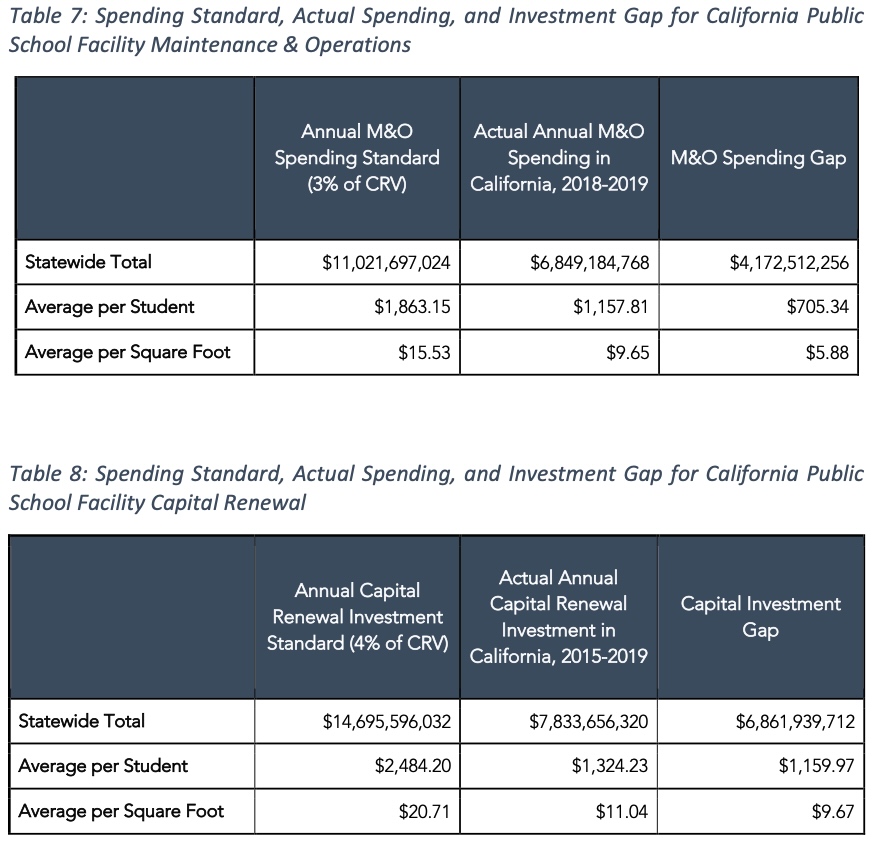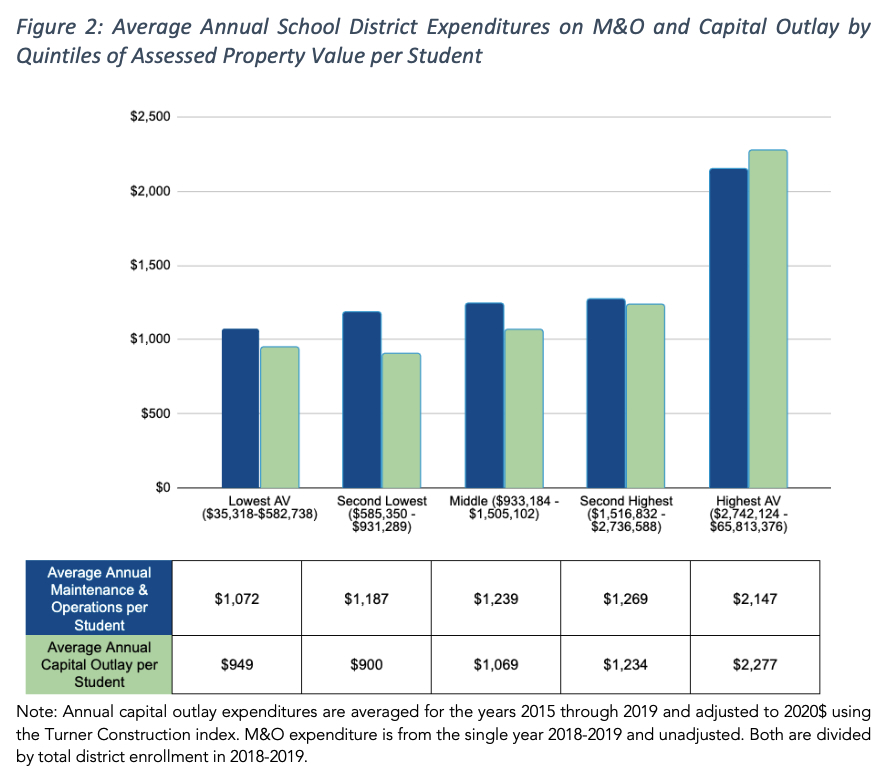Is California Adequately & Equitably Investing in its Public School Facilities?
The Center for Cities and Schools at the University of Berkeley just released Gauging Good Stewardship, a paper that investigates the adequacy and equity of investments in California’s public schools facilities. This study analyzes the levels of investment needed for California’s public school facilities and if the state is adequately and equitably investing in them. By using a standards-based framework to understand patterns of investment levels, Jeffrey Vincent gauges the likely “good stewardship” of these physical school assets and it provides three recommendations for the state leadership to change their investment practices.
Public school districts across California struggle to upkeep and modernize their school facilities. Covering the costs to modernize older school facilities and build new schools has a long history as a “state-local partnership” in California. The state provides capital construction grants to local school districts, who must raise matching capital funds from local sources. For many districts, aging inventory, coupled with limited capital funding opportunities, has led to school facilities with ballooning deferred maintenance problems and classrooms that do not appropriately support modern instructional practices. These realities also work against California’s priorities for high quality, equitable education, childhood health, racial justice, and climate resiliency.
But what level of investment do California’s public school facilities need? Here is a recap of the findings from this study:
- California’s K-12 school facility inventory totals at least 730 million square feet of buildings.
- California’s K-12 school facility inventory has an estimated current replacement value of $378 billion (2020$).

The image below shows an example of two campuses with buildings highlighted in blue.

- California’s public K-12 school facility inventory needs at least $11 billion in maintenance and operations investment each year.
- California’s public K-12 school facility inventory needs at least $15 billion in capital renewal investment each year.
- Only 14% of California school districts are meeting annual facility M&O spending standards.
- Only 15% of California school districts are meeting annual facility capital renewal spending standards.
The tables below show actual spending and the gap each year for M&O and capital investment, in total, per student, and per square foot for of California’s K-12 public school school inventory.

- Only 4% of California public school districts are meeting both facility investment standards.
- California’s annual school facilities investment gap is nearly $2,000 per student.
- Only 4% of California public school districts are meeting both facility investment standards.
- School districts with higher assessed property value invest more in their facilities.
- School facility needs place higher budget burdens on districts serving more low-income students.
The figure below divides all school districts into 5 groups based on their local property wealth (assessed property value per student) and compares their average per student spending on M&O and capital outlay. The districts with the highest property values per student spend far more in both categories.

- 38% of California school districts do not have enough taxable property wealth to meet basic school facility capital needs.
Overall, all students in California should have the ability to attend school in a healthy, efficient, high-quality facility that supports the schools’ education program. It is our responsibility to reflect on these findings and consider the state’s role in funding K-12 school facilities. The author of this paper has the below three recommendations, but as EdSource recently pointed out, California’s schools need funding now more than ever, but some rural areas are still saying no to higher taxes, and this could have extreme consequences. “In a conservative area like this, people are cautious about economic matters,” Superintendent Cliff Curry said. “This election cycle was a slaughterhouse for a lot of districts, we do our best, but that doesn’t mean much when you’re trying to maintain what’s essentially a 40-year-old trailer.”
Recommendations for California to adequately and equitably invest in its public school facilities:
- Increase funding for California’s public school facility infrastructure to ensure that all school districts can reasonably meet both facilities maintenance and capital investment needs through an appropriate combination of local and state funding/financing sources.
- Address inequities by ensuring that low wealth districts have adequate funds to upkeep and modernize their facilities.
- Reform and improve funding standards for facilities planning and budgeting.
READ THE FULL STUDY HERE.
